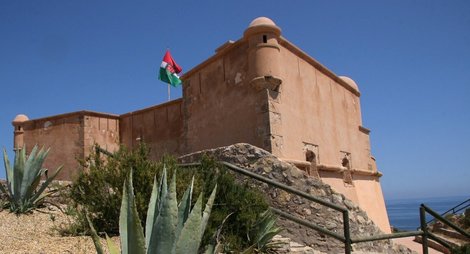Pulpí

Village situated in the northeast of the province, on the border with the province of Murcia, with three well-differentiated zones within its territory: the coast, a depression inland and a small chain of mountains that separate them.
The village is in the second although there are other centres of population like San Juan de los Terreros, a mainly tourist village.
History
Village situated on the border of the province of Murcia. Within its municipal area it is possible to differentiate the coastal area, with the tourist zones of San Juan de los Terreros and el Pilar de Jaravia, from both the depression inland where the principal centres of population are located: Pulpi, El Pozo de la Higuera, El Convoy, La Fuente and Benzal; and from the chain of mountains which separate the first two.
Its history goes back to prehistoric times as Neolithic and Argar remains have been found. There are also abundant remains from Roman times such as mud lamps, iron tools, etc.
During the Al-Andalus period it was an obligatory route from Lorca to Vera, but with the conquest of Lorca by Castillian troops in the XIII century, Pulpi was reduced to a no-man's land between the kingdoms of Murcia and Granada which made the settling of the population difficult.
With the Christian conquest in 1488, Pulpi was included in the municipal area of Vera, but its population was still complicated because it was a zone frequented by Berber pirates. In the XVI century winter pasture lands were created for the refuge of transhumant livestock from the interior. The sale of these pasture lands meant a significant income for the town of Vera. In the middle of the XVII century, faced with the pressure from the people of Vera these lands were shared out to be cultivated although they continued to be the property of Vera. Until the XVIII century there was no definitive settling of the population. In this century the saltwort trade was initiated which brought about a series of conflicts between farmers and stockbreeders. There was also significant local and regional trade in esparto grass.
In the year 1836 it obtained its independence from Vera, but in 1840 it once again belonged to Vera due to a lack of economic resources. With the discovery in 1839 of the Jaroso argentiferous seam in the Sierra Almagrera, the villages near Cuevas de Almanzora, as is the case of Pulpi, increased their population considerably and in 1862 it obtained its definitive independence as a municipal area.
In the XX century, during the Second Republic, a very interesting experiment in the collectivization and productive exploitation of land took place. At the head of this experiment was the mayor Carlos Martinez. With the Civil War and the beginning of the francoist period it was cut short and signified a serious regression for this village. In the sixties intensive farming was introduced which provoked a significant flourishing of the village's economy as did the development of tourism on the coast.
Eminent citizens
Pedro Antonio, painter.
Emilio Zurano Muñoz, sociologist and publicist.

- Max 18
- Min 11
- Max 64
- Min 51
- °C
- °F
















